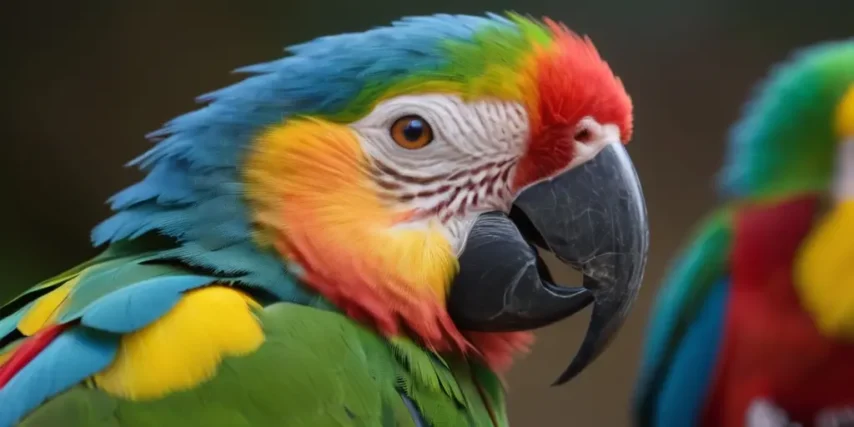Unraveling the Enigma: The Fascinating World of Parrot Speech
Parrots, with their vibrant plumage and charismatic personalities, have long captured the fascination of humans. However, one of the most intriguing aspects of these intelligent birds is their ability to talk. The phenomenon of parrot speech has been a subject of scientific inquiry, captivating both researchers and pet enthusiasts alike. In this article, we will delve into the intricacies of how parrots talk, exploring the underlying mechanisms, cognitive abilities, and the unique features that set these avian chatterboxes apart.

- Anatomical Foundations:
To understand how parrots produce speech, it is essential to first examine their anatomical structures. Parrots possess a unique vocal organ called the syrinx, situated at the base of the trachea where it connects to the bronchi of the lungs. Unlike the human larynx, the syrinx allows parrots to produce sounds independently of breathing. This distinct feature enables them to mimic a wide range of sounds, including human speech.
- Mimicry Mastery:
Parrots are renowned for their exceptional mimicry skills. In the wild, these birds use vocal mimicry for various purposes, such as attracting mates or imitating the calls of other bird species. In captivity, parrots often pick up human speech through exposure and social interaction. The ability to mimic sounds is not limited to vocalizations; parrots can imitate environmental noises, musical tunes, and even the ringing of phones.
- Cognitive Capabilities:
Behind the charming mimicry lies the cognitive prowess of parrots. Studies have revealed that parrots, especially species like the African Grey and Amazon parrot, exhibit remarkable cognitive abilities comparable to those of great apes and dolphins. These birds possess advanced problem-solving skills, an impressive memory, and a keen understanding of cause and effect. These cognitive abilities contribute to their capacity to learn and reproduce complex vocal patterns.

- Social Learning and Communication:
In their natural habitats, parrots are highly social creatures that engage in complex communication with their flock members. This social aspect of their behavior extends to their interactions with humans in captivity. Parrots learn to talk through a process known as social learning, where they pick up sounds and words from their human companions. The presence of a nurturing and communicative environment is crucial for a parrot’s linguistic development.
- Selective Imitation:
Parrots are discerning imitators. They don’t mindlessly repeat sounds but selectively imitate those that garner attention or reward. Positive reinforcement, such as treats or praise, plays a significant role in shaping a parrot’s speech. This selective imitation suggests a level of intentionality and awareness in their vocal learning process.
- Individual Variability:
Just as in human speech, parrot speech exhibits individual variability. Each parrot has its unique vocal repertoire, pitch, and rhythm. Some birds may excel in imitating human speech, while others might prefer mimicking environmental sounds. This individuality adds a layer of complexity to understanding the nuances of parrot communication.

- Environmental Influence:
The environment in which a parrot is raised significantly influences its ability to talk. Birds that grow up in a stimulating and interactive environment with regular human interaction are more likely to develop advanced vocal skills. Conversely, isolation or a lack of socialization can impede a parrot’s speech development.
In unraveling the enigma of how parrots talk, we uncover a rich tapestry of anatomical adaptations, cognitive abilities, and social dynamics. The mimicry mastery of parrots, coupled with their advanced cognitive skills, makes them unique among the avian species. As we continue to explore and understand the intricacies of parrot speech, we gain insights not only into the fascinating world of these feathered companions but also into the broader realm of animal communication. Whether perched in the wild or in our living rooms, parrots remind us of the incredible diversity and complexity of the natural world, inviting us to marvel at the beauty of their speech and the mysteries that still unfold within their vibrant minds.







